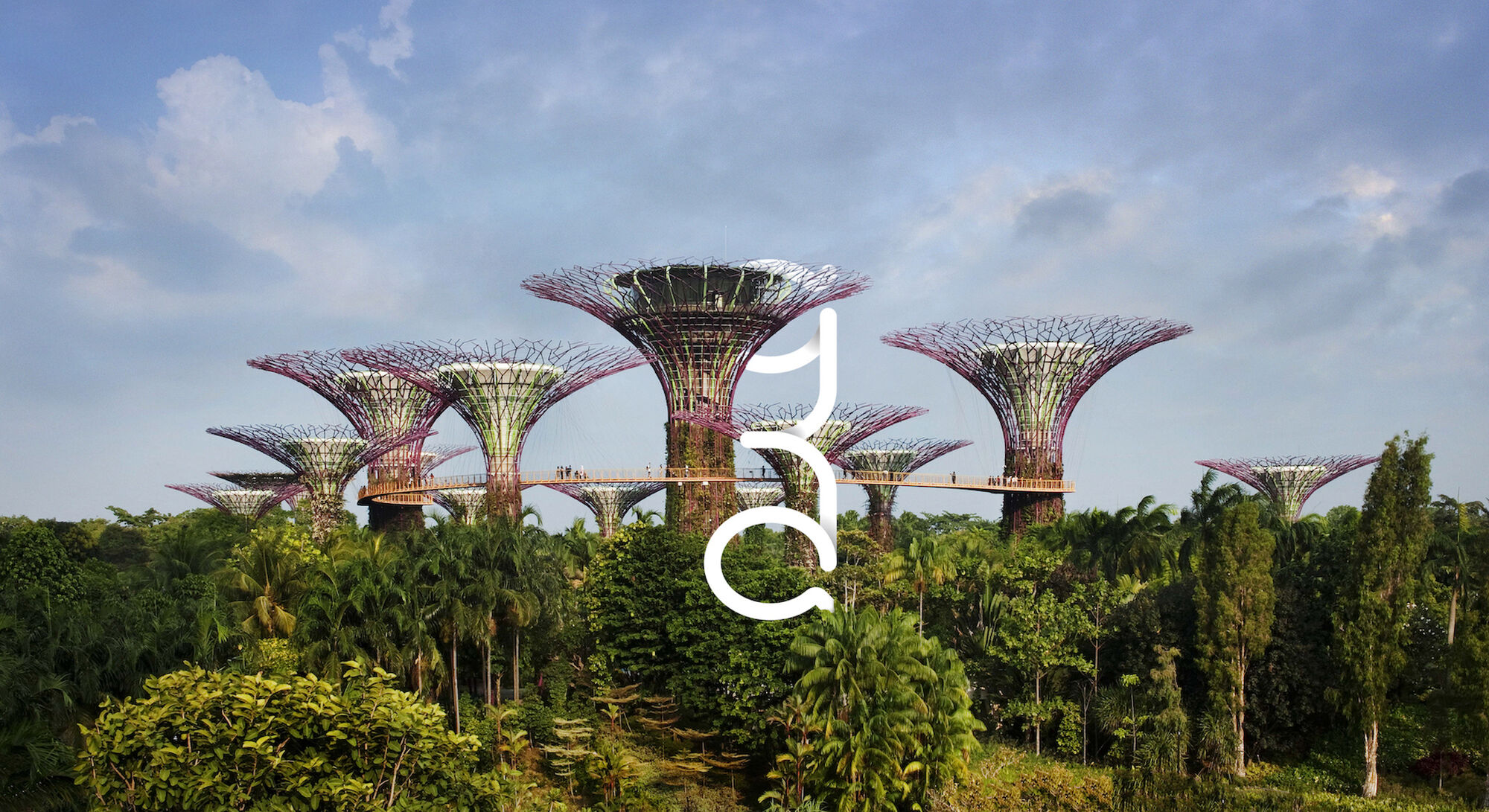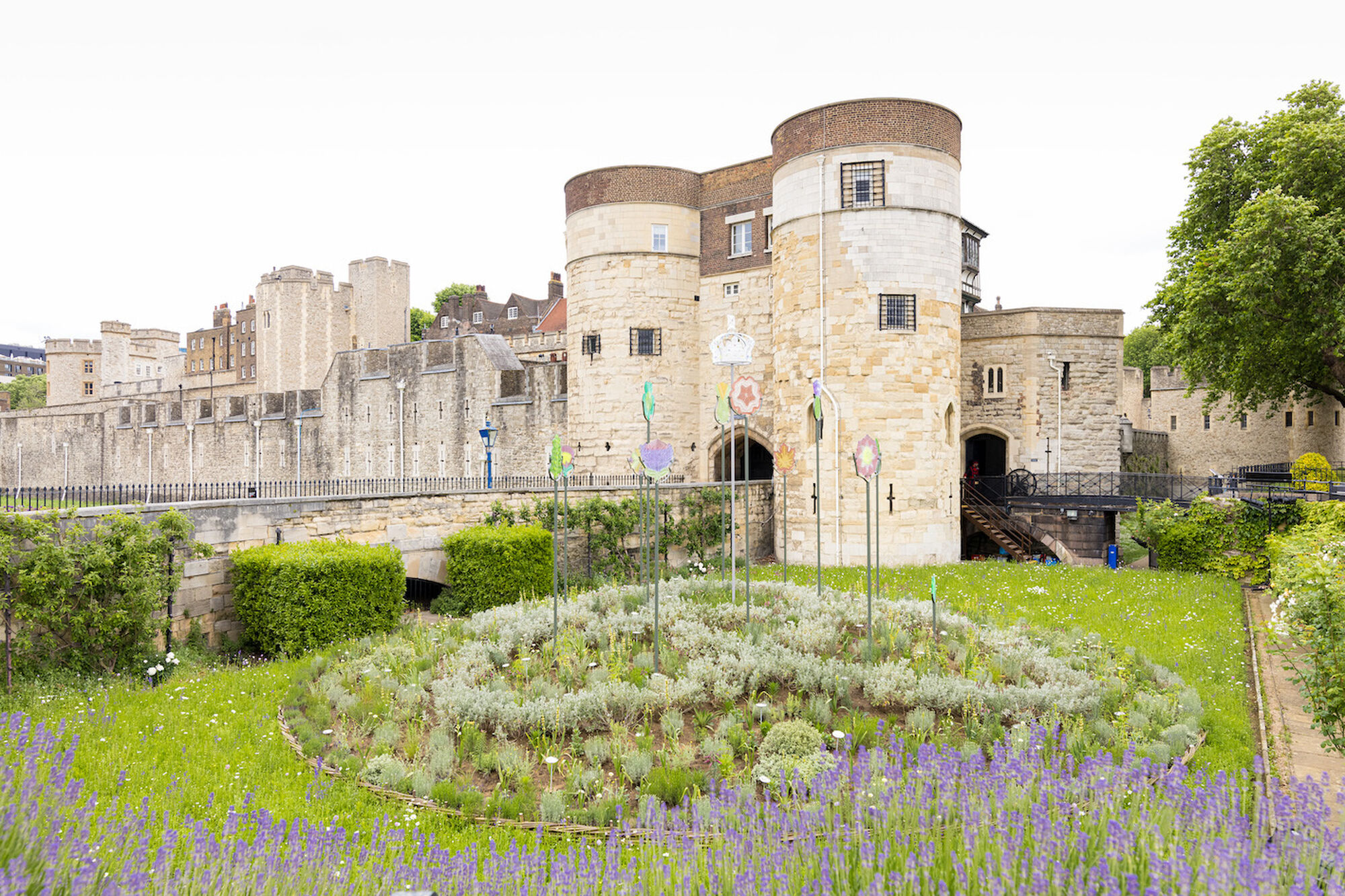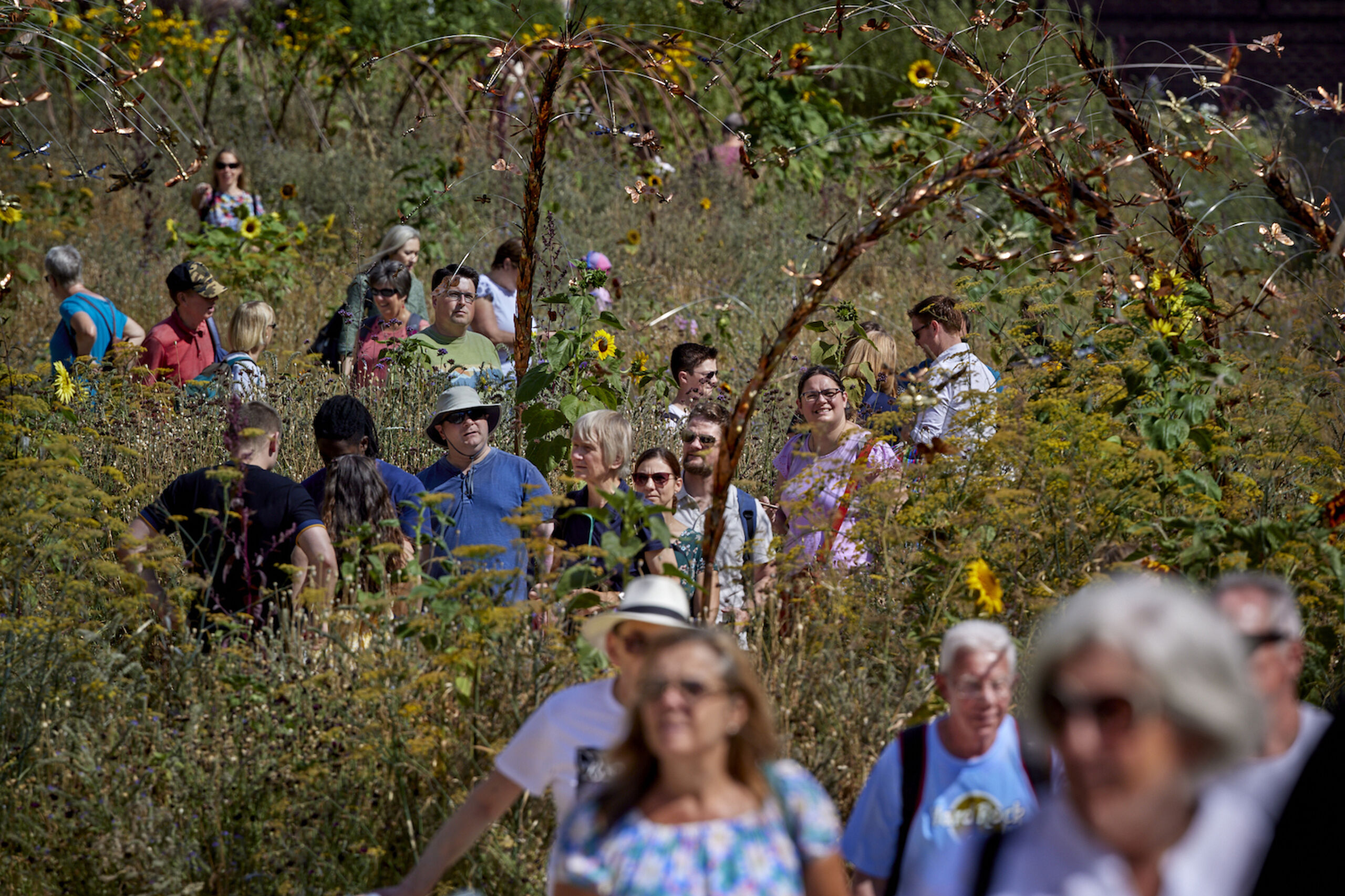

‘Superbloom’ success points towards future possibilities for biodiverse city havens
The design team behind this year's historic Tower of London moat transformation believes that the success of the ‘Superbloom’ is just the first step towards the reimagining of cityscapes worldwide to intentionally incorporate more spaces for biodiversity to thrive.
Landscape architects Grant Associates masterminded the design of the Superbloom experience for Historic Royal Palaces, custodians of the Tower of London, working with leading horticulturist Nigel Dunnett of the University of Sheffield, soil scientist Tim O’ Hare and an extensive team of design, creative and landscape specialists. The display marked the first time that the Tower of London’s moat had been opened up for the public to walk around at leisure.
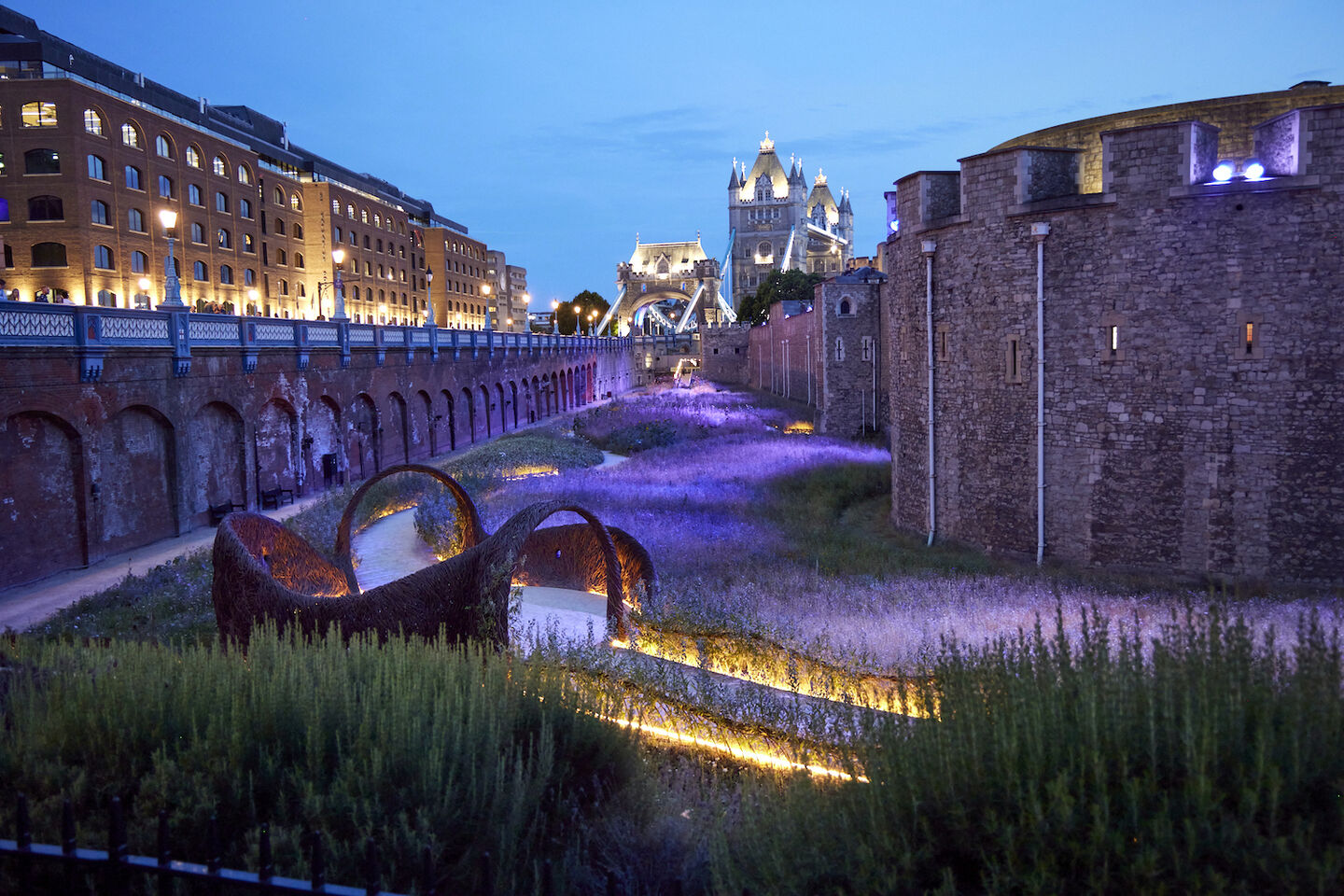
The celebratory project, which sought to recognise the value and importance of nature to our collective wellbeing, attracted over 200,000 paying visitors and almost 30,000 education visitors between June to September. A further 26,000 visitors enjoyed the Superbloom’s final blooms in late September after the special attraction’s entry fee was lifted.
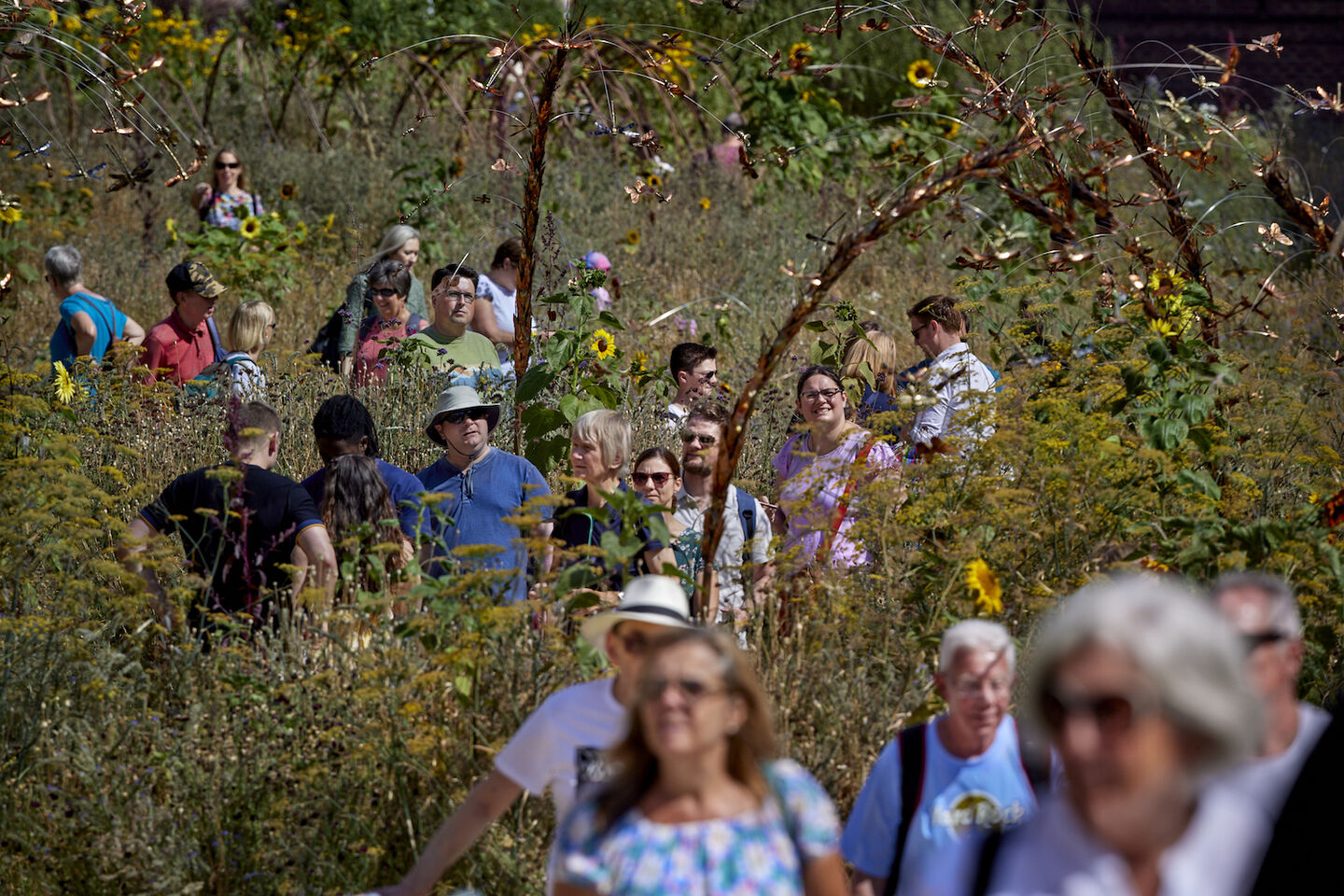
Visitors reported being “blown away by the beauty of the masses of flowers and the waves of colour”. One visitor stated that “walking among the blooms made me feel part of the display, being able to pause and appreciate individual and groups of flowers,” while another described it as “a lovely experience; amazing to see the moat filled with beautiful wild flowers.”
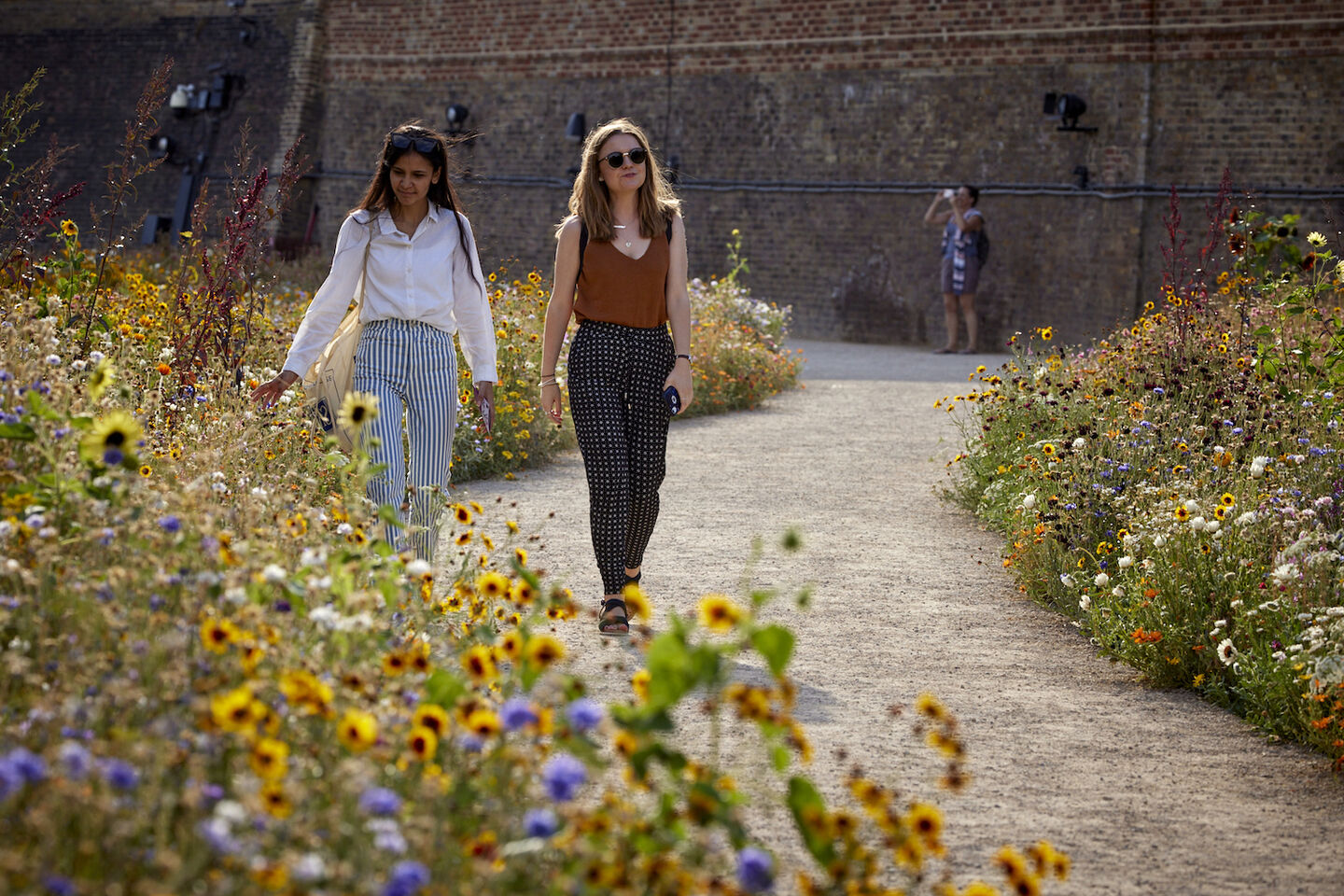
Superbloom featured a planting scheme of over 20 million seeds intentionally selected to provide visitors with a different experience whenever they came, all bolstered by an evocative soundscape and sculptures throughout.
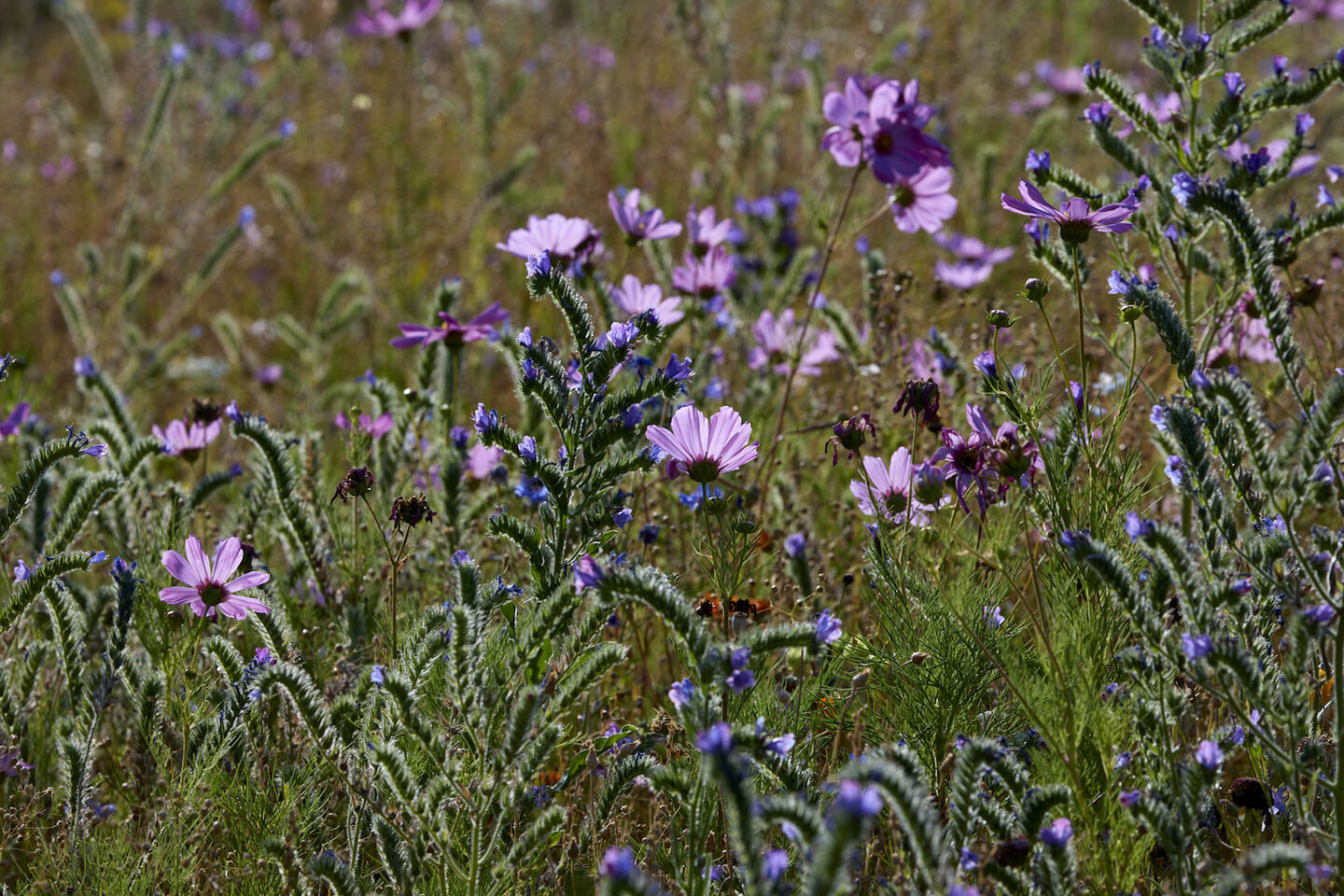
A key feature of the Superbloom display was the ‘Queen’s Garden’, developed by Andrew Grant and James Clarke of Grant Associates to recognise the Platinum Jubilee of the late Her Majesty Queen Elizabeth II. The elegant garden took creative inspiration from the colours, shapes and motifs employed by famed British couturier Sir Norman Hartnell for The Queen’s 1953 coronation gown, with concentric scalloped hedging intended to evoke the scalloped tiers of embroidery which featured on the gown’s silk skirt.
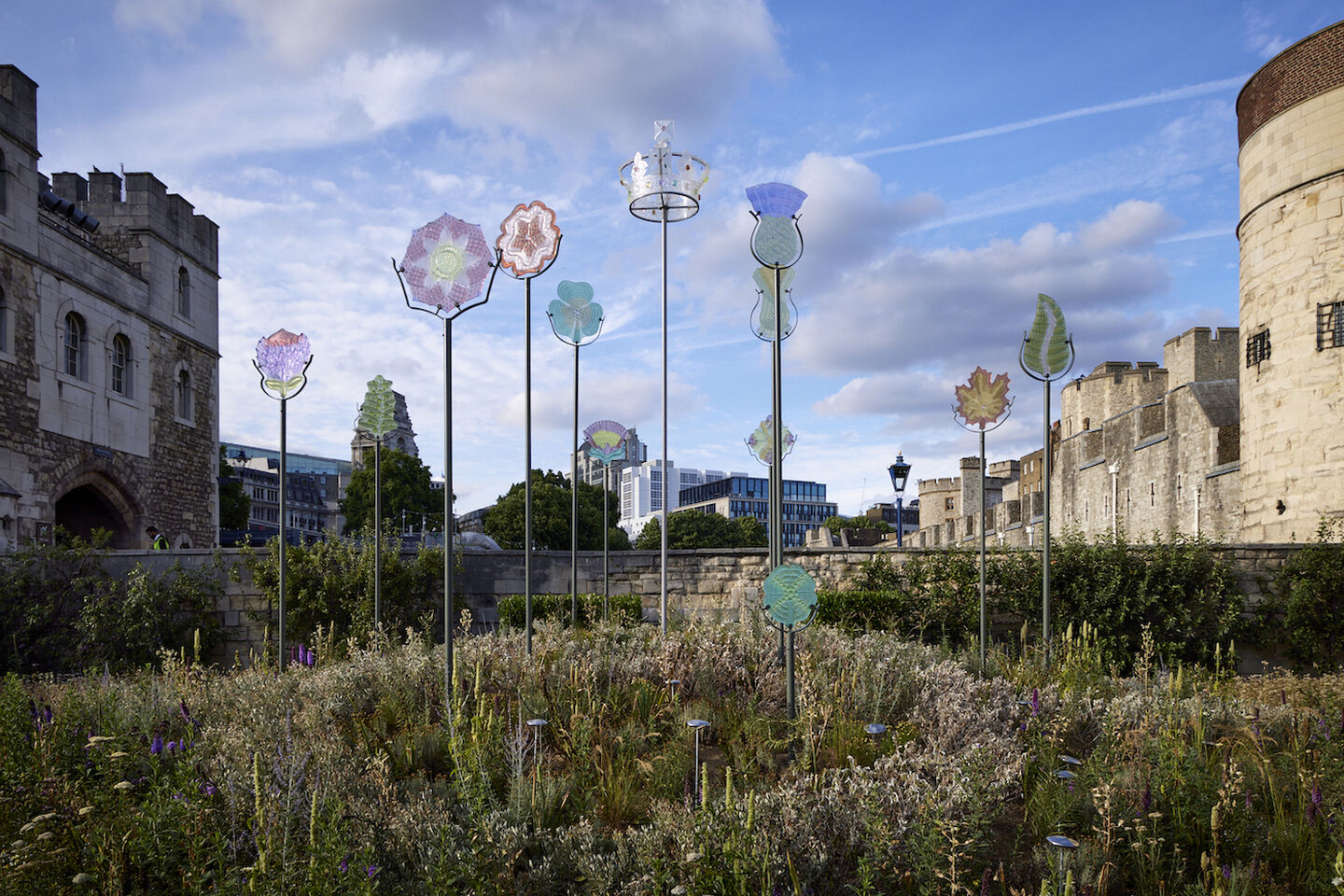
The Tower of London Superbloom was always envisaged to be an evolving landscape display that would shift and change colours and patterns, both this year and in the years to come. Its intention was to change the way visitors see and interact with the moat - and that’s been firmly accomplished this year. This has just been the first stage in what is set to be a long-term journey of biodiverse transformation for the site. In the years to come, the plants, wildlife and soil will all naturally adapt and evolve on the site, while the moat will continue to serve as an inspiring haven of nature at the very heart of the city of London. The project shows that, even in the most bustling and developed of urban environments, it is still possible to intentionally create powerful spaces that are full of life and where nature can thrive.
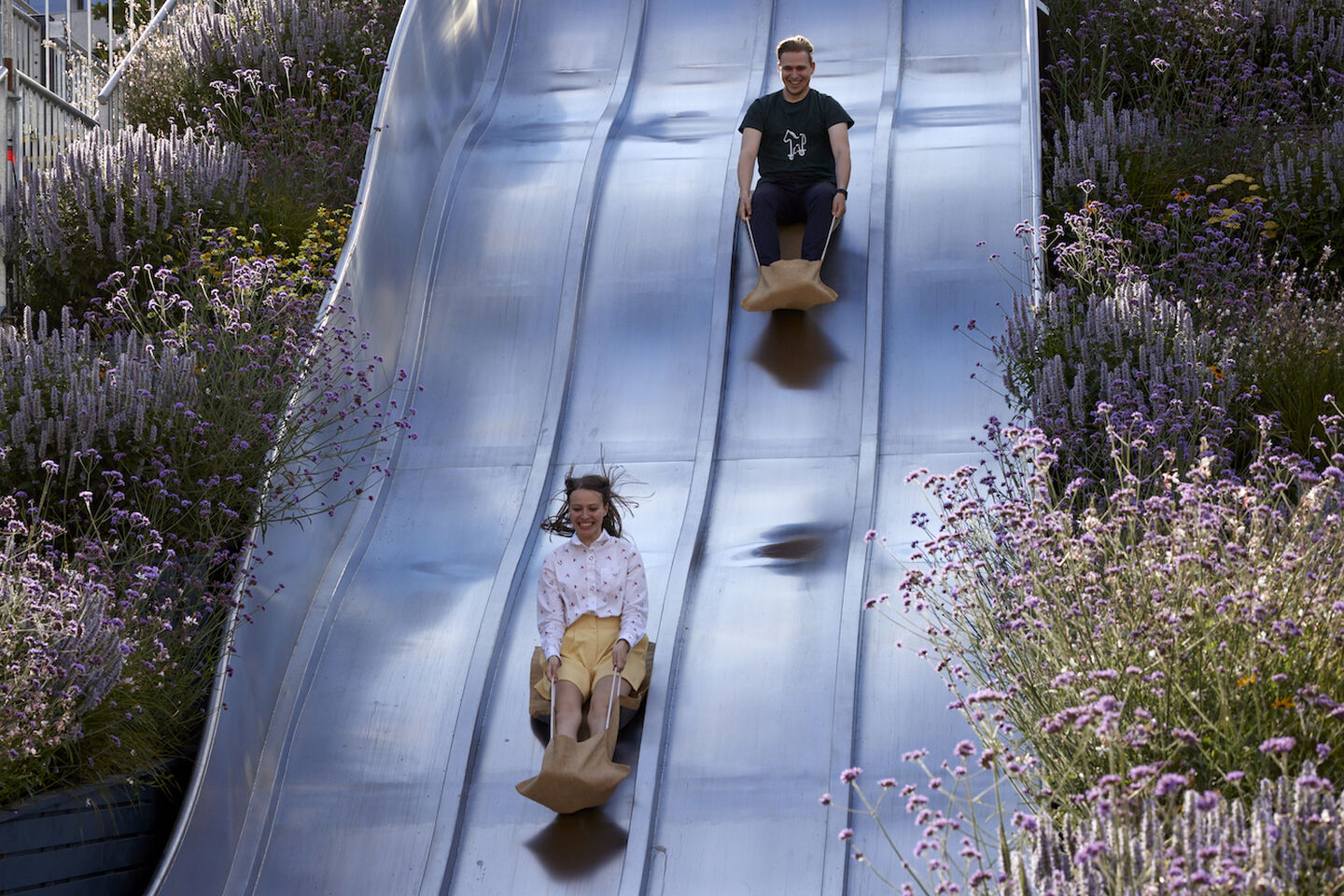
Superbloom was a unique and ambitious undertaking for Historic Royal Palaces; the biggest change to the moat since 1845. It has been a significant achievement to install a new landscape in the historic moat and to grow from seed a mass display of flowers as we emerged from the pandemic. Despite facing unprecedented weather conditions, the blooms looked beautiful, especially during July. We have learned a great deal about the microclimate of the moat which will take us forward into developing the landscape as a future attraction for visitors and home for pollinators and other wildlife.
The Tower of London Superbloom will continue to be closely overseen by HRP, Grant Associates and the wider project team, to ensure that it flourishes into a long-term habitat and green haven for pollinators, insects and seed-eating birds alike.
Tower of London Superbloom: key collaborators for Historic Royal Palaces
- Grant Associates - lead designers
- Nigel Dunnett - horticulturist
- Tim O’ Hare - soil scientist
- Spencer Jenkins - willow sculptures
- Quist - insect sculptures
- Max Jacquard - glass artist
- Dawn Bendick - glass artist
- Hoare Lea - soundscape design
- Erland Cooper - soundscape composer
- Nipek - lighting design
- MNP - structural and civil engineers
- Qoda - m+e engineers
- Goss Consultancy - access consultant
- Have - cdm consultant
- Landform - landscape contractor
Any media questions on the future of the moat project should be sent to: press@hrp.org.uk
Photography credit: Alister Thorpe
Videography credit: Nathalie Baker Film

